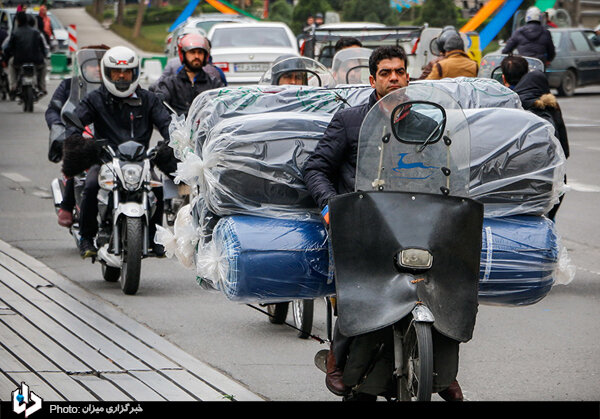DOE strongly rejects reproduction of carbureted motorcycles

TEHRAN – While the production of carbureted-engine motorcycles has come to a halt in the country, some motorcycle manufacturing companies are trying to put the highly polluting vehicles into production again, but the Department of Environment (DOE) strongly opposed.
The Tehran motorcycle fleet consists mostly of carburetor-equipped motorcycles which are typically less fuel efficient and emit more emissions compared to newer, fuel injection technology.
In order to tackle the problem, the national working group for air pollution mitigation, affiliated to the DOE, made a proposal to bring production of the pollutant carbureted-engine motorcycles to halt some two years ago. The cabinet of ministers approved the proposal on June 22, 2016 which went into effect as of September 2016. While there are still about 1 million motorcycles in the capital the law was hoped to cease the production of the polluting models and encourage fuel injection technology and manufacture of electric motorcycles.
“Unfortunately, some are seeking illegal ways to issue license plate for 12,000 carbureted-engine motorcycles, so we sent a letter to First Vice-President Es’haq Jahangiri, expressing serious opposition to the request,” deputy environment chief Masoud Tajrishi said.
Some are trying to override air pollution mitigation laws and regulations, he said, adding, recently, they succeeded to delay the implementation of two articles of the clean air law, one of which was scrapping old motorcycles and the other one was discarding clunker vehicles from operation.
Unfortunately, as the government fell short of these two provisions of the Clean Air Act, some have dared to re-propose their requests after years, he lamented, ISNA reported on Tuesday.
According to the clean air law, no license plate for carbureted-engine motorcycle should be issued unless a clunker carbureted motorcycle is scrapped.
The clean air law constituting 35 articles has been drawn up by the Department of Environment as an integrated approach to curb air pollution, which was passed by the parliament on July 16, 2017. The law singles out inefficient vehicles, substandard fuels, industrial activities, and dust storms as the major sources of air pollution in the country and tasks different organizations with specific actions in line with the objective.
Noting that some are unfortunately using economic and unemployment problems as an excuse to undermine the public health and reproduce such polluting vehicles, Tajrishi said that if the government allows a factory to manufacture and issues license plate for carbureted motorcycles, then other companies will also request to get their motorcycles identification number.
Carburetors on motorcycles produce 15.5 grams of emissions per kilometer, which is six times higher than a Euro 2 car, he regretted.
According to studies, 5 carburetor equipped motorcycles generates particulate matter as much as an extremely old diesel bus, while replacing carburetors with fuel injection can reduce particulate matter by 90 percent.
Tehran Municipality has recently implemented a pilot project to replace carbureted engines with injectors, which turn out to be successful, Mohsen Pourseyed Aqaei, CEO of Transportation and Traffic Organization affiliated to the municipality, said.
Diesel cars and carbureted motorcycles are the major sources generating NOx; therefore, solutions are required to reduce the number of these vehicles in order to mitigate ozone.
Currently, some 2.5 million motorcycles are plying Tehran streets, of which some 2.4 million are carbureted equipped, and some 1.5 million are extremely old emitting particles.
In other words, carbureted motorcycles account for 96.7 percent of all motorcycles running in the capital, while 61.8 percent of which are clunker playing a vital role in ozone pollution raise.
FB/MG
